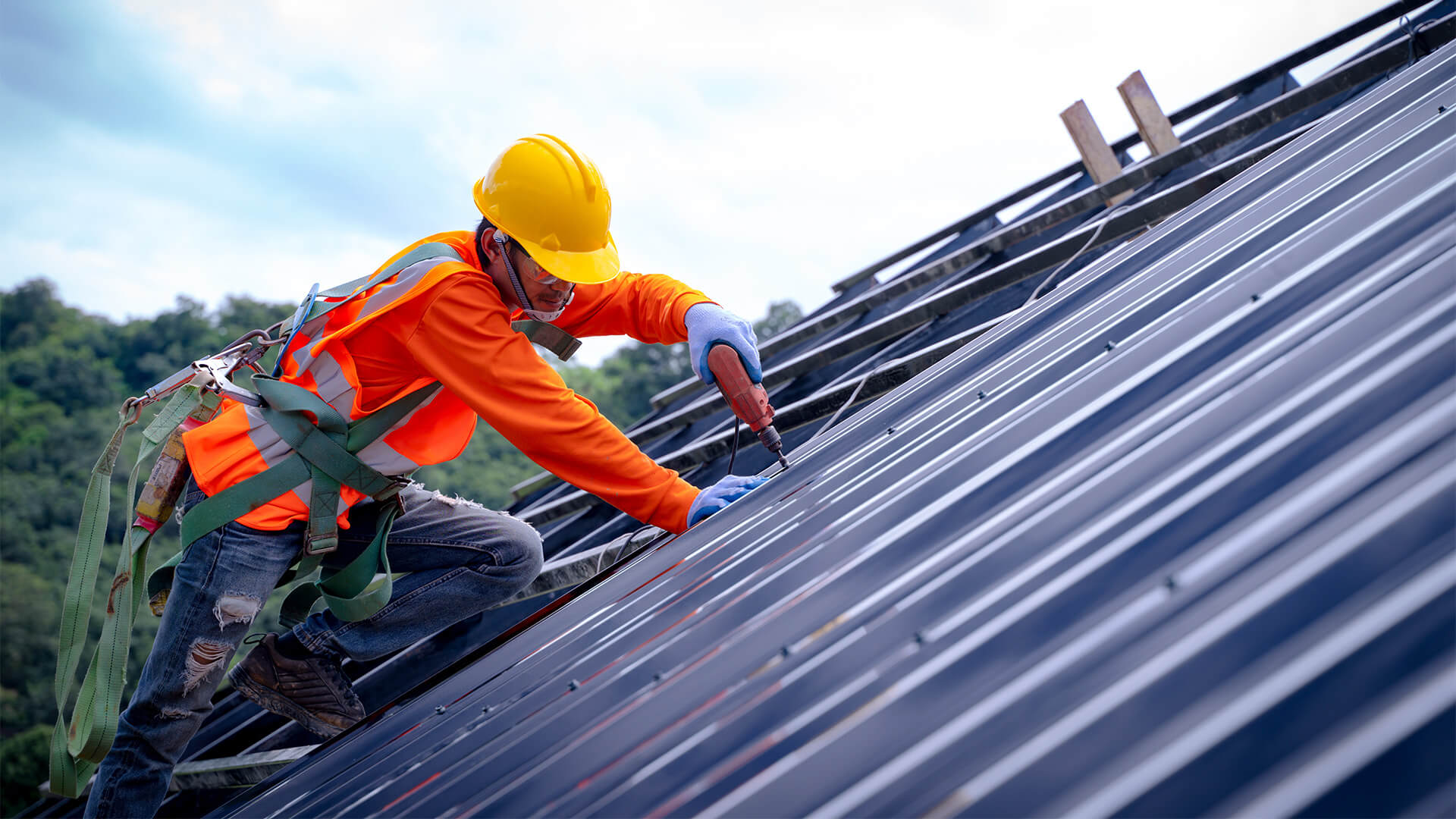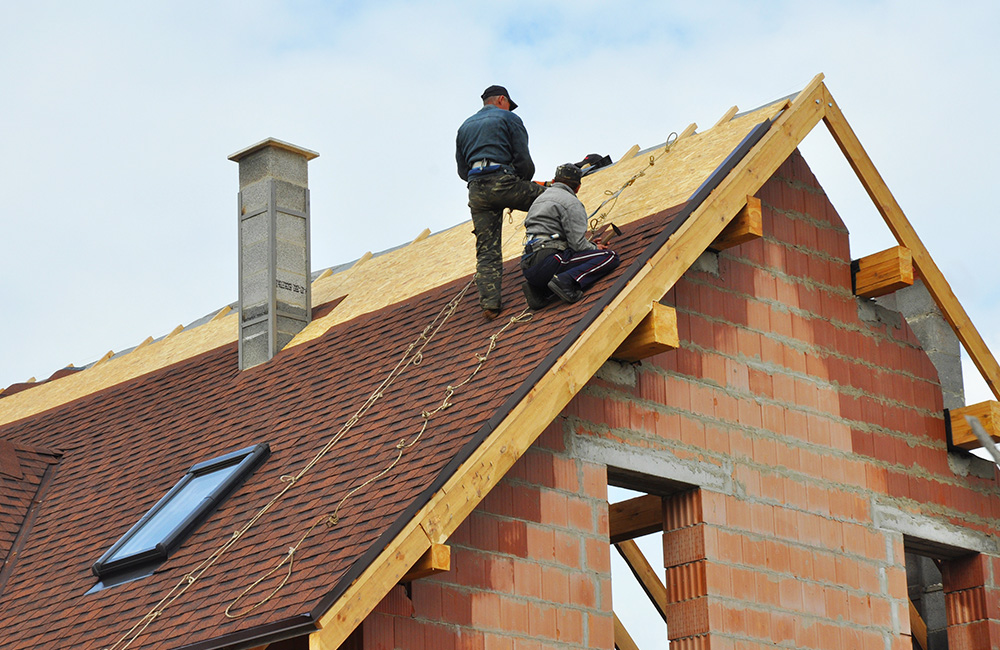Roofers Oahu: Experienced Contractors for Roof Installations and Fixes
Roofers Oahu: Experienced Contractors for Roof Installations and Fixes
Blog Article
Comprehending the Various Kinds Of Roofs: A Comprehensive Guide for Homeowners
In the world of homeownership, selecting the suitable roofing style is a decision that carries substantial ramifications for both functionality and visual charm. With a selection of choices-- varying from the standard gable to the contemporary flat-- each type offers one-of-a-kind advantages and challenges that should straighten with the property owner's details demands and ecological factors to consider. Recognizing these differences not only aids in making an enlightened option yet likewise influences long-term upkeep and energy performance. As we discover the details of various roofing types, it ends up being evident that one dimension does not fit all; the best selection might amaze you.
Saddleback Roof
Saddleback roofs, defined by their triangular form, are among the most popular roof covering styles because of their simpleness and effectiveness in dropping water and snow. This design includes 2 sloping sides that satisfy at a ridge, permitting efficient water drainage and reducing the danger of water accumulation. The steep pitch generally related to saddleback roofs enhances their capacity to deal with heavy precipitation, making them appropriate for numerous climates.
Along with their useful advantages, gable roofing systems provide aesthetic convenience. They can be adjusted to different architectural styles, from conventional to modern-day homes. The style can also fit added features such as dormer home windows, which enhance natural light and ventilation in the attic area.
Moreover, saddleback roofs provide ample space for insulation, contributing to energy efficiency. House owners can choose from a selection of roofing materials, including asphalt shingles, metal, and floor tiles, additionally improving personalization alternatives.
In spite of their advantages, gable roofs may require added support in areas susceptible to high winds or heavy snowfall. On the whole, the saddleback roof remains a favored option because of its mix of capability, sturdiness, and aesthetic charm.
Flat Roofs
Level roofs are frequently acknowledged for their minimalist layout and functional applications, especially in commercial and industrial setups (oahu roofing). These roofing systems feature a horizontal or nearly straight surface, which enables very easy building and functional area utilization. While they might do not have the visual charm of angled roofs, level roof coverings provide many benefits, especially in urban settings where making best use of room is important
Among the primary benefits of flat roofing systems is their accessibility. House owners can use the roofing area for different purposes, such as roof yards, balconies, or solar panel installations. Furthermore, flat roofs are generally more economical to install and keep compared to their sloped counterparts, as they call for less materials and labor.
Nonetheless, level roofings do present specific obstacles. Correct drain is necessary to prevent water pooling, which can cause leakages and architectural damages. For this reason, selecting top quality waterproofing products and regular examinations are critical for guaranteeing durability. Common materials utilized for flat roofs consist of built-up roofing (BUR), changed asphalt, and single-ply membranes, each offering distinctive benefits. Overall, flat roofings act as a functional and adaptable option for several house owners and organizations alike.
Hip Roofings
Hip roof coverings are defined by their sloped sides that assemble at the top, developing a ridge. This layout stands out from gable roofings, as all four sides of a hip roof covering incline downwards towards the walls, offering a much more stable structure. The angle of the inclines can differ, allowing for adaptability in architectural aesthetics and performance.
One of the key advantages of hip roofing systems is their ability to endure hefty winds and unfavorable weather. The sloped surfaces make it possible for much better water drainage, reducing the threat of leakages and water damage. Additionally, hip roof coverings supply boosted attic room, which can be made use of for storage space or perhaps converted right into livable areas.
However, creating a hip roofing system can be a lot more costly and intricate than easier roofing system types, such as saddleback roofs. The extra product and labor included in producing the slopes and making sure correct architectural honesty can result in greater expenses. In spite of these disadvantages, many homeowners favor hip roofings for their resilience, aesthetic charm, and capacity for power efficiency.
Mansard Roof Coverings
Mansard roofs, commonly identified by their distinct four-sided style, feature two slopes on each side, with the lower slope being steeper than the upper. This architectural style, originating from France in the 17th century, is not just visually attractive yet useful, as it makes the most of the functional area in the learn this here now upper floorings of a structure. The high lower incline enables more headroom, making it an excellent selection for loft spaces or attics, which can be transformed into living spaces.
Mansard roof coverings are characterized by their versatility, accommodating various architectural designs, from typical to contemporary. They can be created with various products, including asphalt tiles, slate, or metal, providing home owners with an array of options to fit their budget plans and choices. Furthermore, the style permits the assimilation of dormer home windows, boosting all-natural light and ventilation in the top degrees.
However, it is important to think about the potential downsides. Mansard roofs may call for more upkeep as a result of the intricacy of their design, and their high inclines can be challenging for snow and rain drainage. Overall, mansard roofings combine beauty with practicality, making them a preferred option among homeowners seeking unique architectural features.
Dropped Roofings
As property owners significantly seek simpleness and capability in their architectural styles, dropped roofing systems have arised as a popular selection. Defined by a solitary sloping airplane, a shed roofing offers a minimal visual that matches different home designs, from contemporary to rustic.
One of the key benefits of a shed roof covering is its simple construction, which typically converts to reduce labor and product expenses. This layout permits efficient water drain, minimizing the risk of leaks and water damages. Additionally, the upright incline supplies adequate space for skylights, improving natural light within the interior.
Dropped roofs likewise provide versatility in terms of usage. They can be properly incorporated into enhancements, garages, or outdoor structures like structures and sheds. In addition, this roofing system design can accommodate different roofing materials, including metal, asphalt tiles, and even eco-friendly roofings, straightening with environmentally friendly initiatives.
However, it is important to consider local climate conditions, as heavy snow tons may necessitate modifications to the roof's angle or framework. Generally, lost roofing systems present a practical and visually pleasing option for home owners wanting to optimize functionality without compromising design.
Final Thought


Gable roofs, identified by their triangular shape, are amongst the most prominent roof covering designs due to their go to website simplicity and performance in dropping water and snow. oahu roofing. The steep pitch frequently linked with gable roofing systems enhances their ability to take care of hefty rainfall, making them appropriate for numerous climates
While they might do not have the aesthetic appeal of pitched roof coverings, flat roofs use numerous advantages, specifically in urban settings where optimizing space is critical.

Report this page